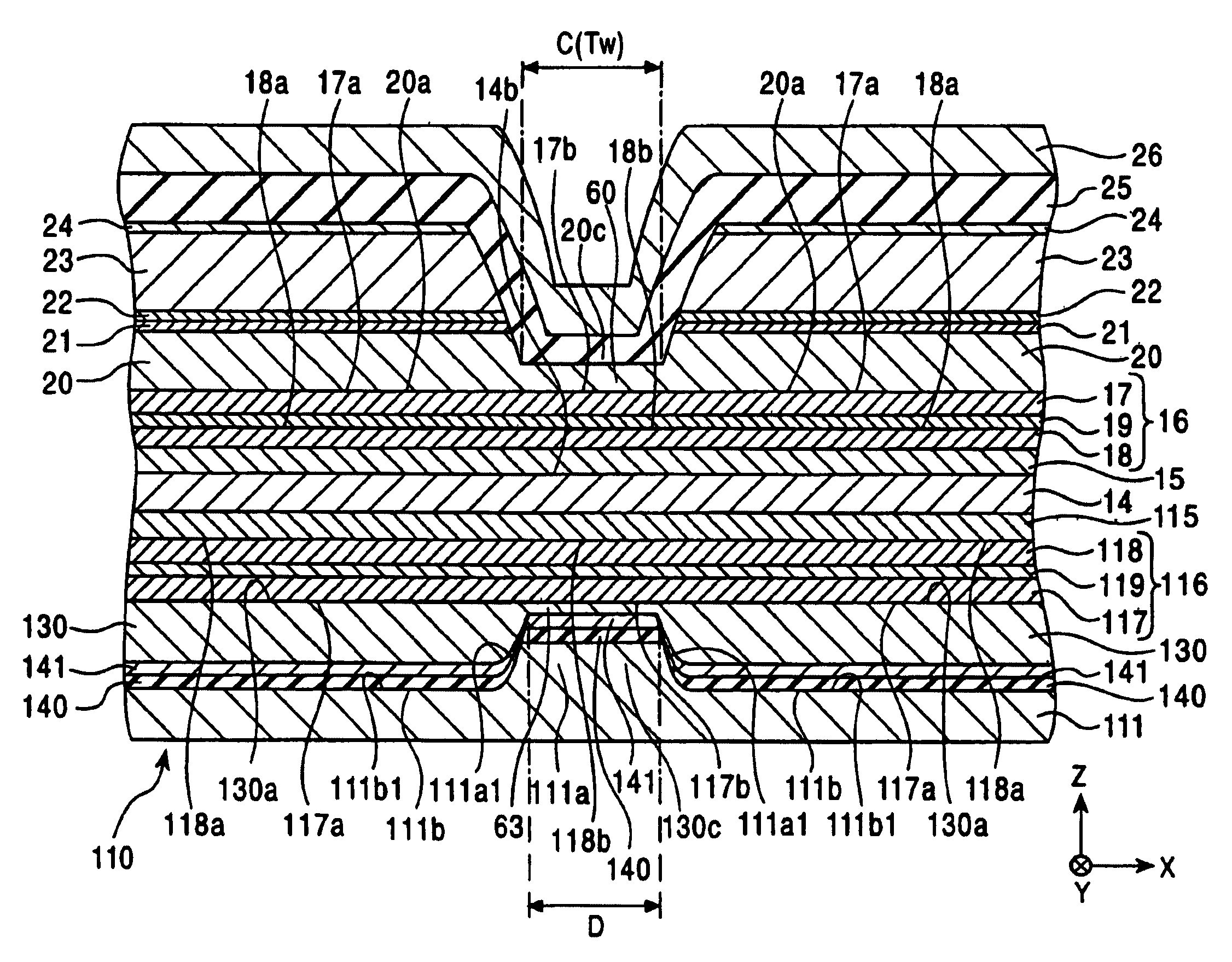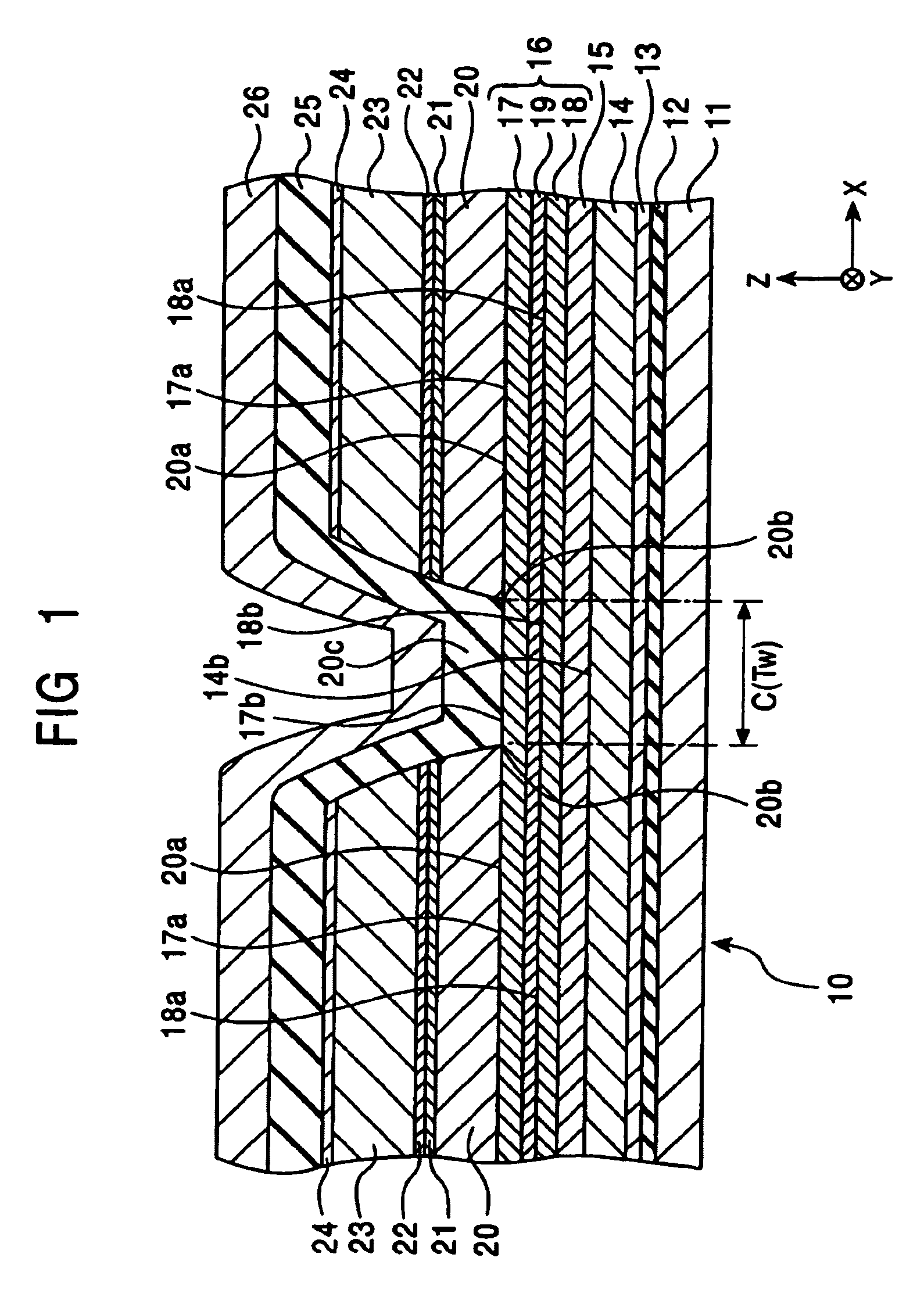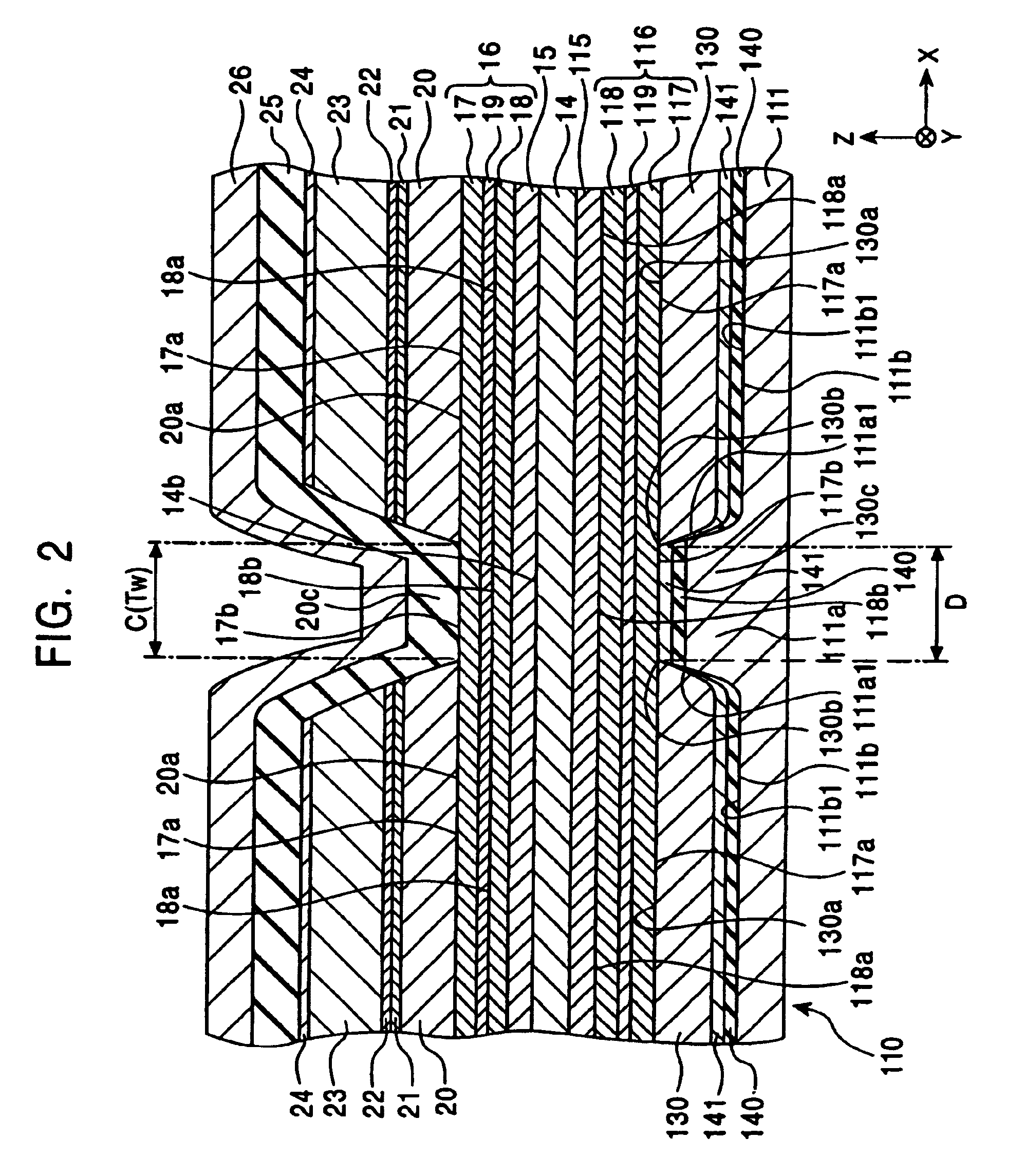Magnetic sensor having free layer additionally provided with magnetic anisotropy by shape anisotropy
a free layer and magnetic anisotropy technology, applied in the field of magnetic sensors, can solve the problems of reducing the reproduction output, limiting the resolution, and increasing the distance between the upper shield layer and the lower shield layer, so as to simplify the structure of the entire element and reduce the thickness
- Summary
- Abstract
- Description
- Claims
- Application Information
AI Technical Summary
Benefits of technology
Problems solved by technology
Method used
Image
Examples
examples
[0217]By using magnetic sensors having the structures shown in FIG. 17 (example) and shown in FIG. 20 (comparative example), a unidirectional exchange bias magnetic field Hex* and a reproduction output (normalized output) were obtained.
[0218]FIG. 17 (example) is a partial cross-sectional view schematically showing a magnetic sensor when it is viewed from the face opposing a recording medium, and the film structure had a seed layer of 60 atomic percent of (Ni0.8Fe0.2) and 40 atomic percent of Cr (60 Å); a free magnetic layer of 80 atomic percent of Ni and 20 atomic percent of Fe (35 Å) / 90 atomic percent of Co and 10 atomic percent of Fe (10 Å); a nonmagnetic material layer of Cu (21 Å); a fixed magnetic layer [a second magnetic layer of 90 atomic percent of Co and 10 atomic percent of Fe (X Å) / an interlayer of Ru (9 Å) / a first magnetic layer of 90 atomic percent of Co and 10 atomic percent of Fe (Y Å)]; and antiferromagnetic layers of 50 atomic percent of Pt and 50 atomic percent of ...
PUM
| Property | Measurement | Unit |
|---|---|---|
| length | aaaaa | aaaaa |
| lattice spacing | aaaaa | aaaaa |
| lattice spacing | aaaaa | aaaaa |
Abstract
Description
Claims
Application Information
 Login to View More
Login to View More - R&D
- Intellectual Property
- Life Sciences
- Materials
- Tech Scout
- Unparalleled Data Quality
- Higher Quality Content
- 60% Fewer Hallucinations
Browse by: Latest US Patents, China's latest patents, Technical Efficacy Thesaurus, Application Domain, Technology Topic, Popular Technical Reports.
© 2025 PatSnap. All rights reserved.Legal|Privacy policy|Modern Slavery Act Transparency Statement|Sitemap|About US| Contact US: help@patsnap.com



